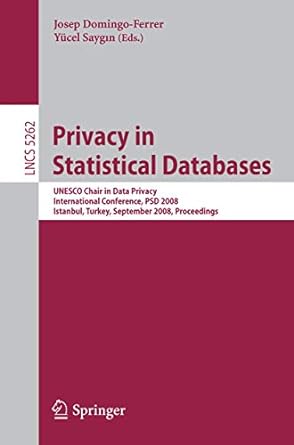Question
WARNING--- IF YOU CAN'T EXPLAIN , THEN NEVER ATTEMPT THIS.. Barrier is a synchronization construct where a set of processes synchronizes globally i.e. each process
WARNING--- IF YOU CAN'T EXPLAIN , THEN NEVER ATTEMPT THIS..
Barrier is a synchronization construct where a set of processes synchronizes globally i.e. each process in the set arrives at the barrier and waits for all others to arrive and then all processes leave the barrier. Let the number of processes in the set be three and S be a binary semaphore with the usual P and V functions. Consider the following C implementation of a barrier with line numbers shown on left.
void barrier (void) { 1: P(S); 2: process_arrived++; 3: V(S); 4: while (process_arrived !=3); 5: P(S); 6: process_left++; 7: if (process_left==3) { 8: process_arrived = 0; 9: process_left = 0; 10: } 11: V(S); }
The variables process_arrived and process_left are shared among all processes and are initialized to zero. In a concurrent program all the three processes call the barrier function when they need to synchronize globally.
Q. The above implementation of barrier is incorrect. Which one of the following is true? (a) The barrier implementation is wrong due to the use of binary semaphore S (b) The barrier implementation may lead to a deadlock if two barrier in invocations are used in immediate succession. (c) Lines 6 to 10 need not be inside a critical section (d) The barrier implementation is correct if there are only two processes instead of three.
give me ans with details explanations....
Step by Step Solution
There are 3 Steps involved in it
Step: 1

Get Instant Access to Expert-Tailored Solutions
See step-by-step solutions with expert insights and AI powered tools for academic success
Step: 2

Step: 3

Ace Your Homework with AI
Get the answers you need in no time with our AI-driven, step-by-step assistance
Get Started


